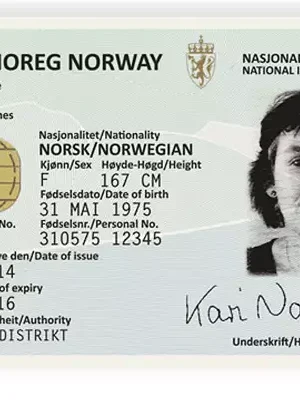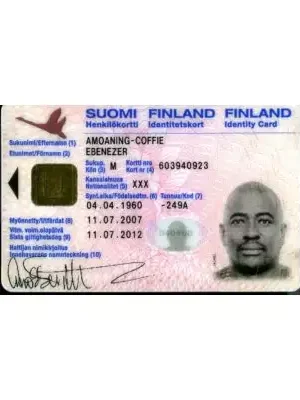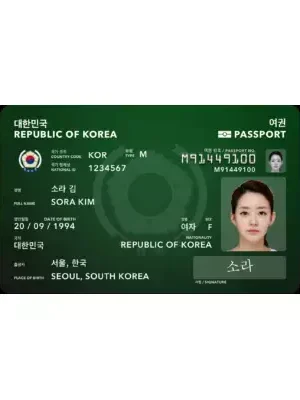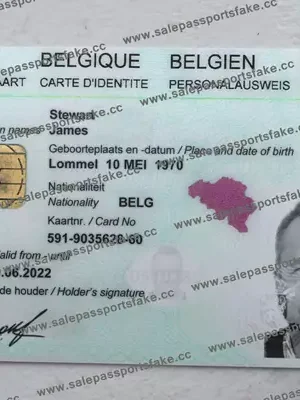+49 1523 1635788 info@documentshome1.com
LUXEMBOURG ID CARD
$1,000.00
The Luxembourg ID card is a national identity document issued to Luxembourg citizens and residents. It serves as proof of identity and nationality and can also be used for travel within the European Union and a number of other European countries.
Description
LUXEMBOURG ID CARD
What is a Luxembourg ID card?
The Luxembourg ID card is a national identity document issued to Luxembourg citizens and residents. It serves as proof of identity and nationality and can also be used for travel within the European Union and a number of other European countries.
Who is eligible for a Luxembourg ID card?
All Luxembourg citizens who are habitually resident in Luxembourg and aged 15 or over are required to apply for a Luxembourg ID card. It is optional for those under 15.
How to apply for a Luxembourg ID card
You can apply for a Luxembourg ID card at your local commune office. The application process is relatively simple and straightforward. You will need to provide the following documents:
- A completed application form
- A recent passport-sized photograph
- Proof of identity (e.g., your current ID card, passport)
- Proof of residence in Luxembourg (e.g., your electricity bill)
- Payment of the application fee
What information is on a Luxembourg ID card?
The Luxembourg ID card contains the following information:
- Your name
- Date of birth
- Place of birth
- Nationality
- Sex
- ID number
- Photo
- Signature
The card also has a chip that stores additional information, such as your fingerprints.
How long is a Luxembourg ID card valid for?
Luxembourg ID cards are valid for 10 years for adults and 5 years for children under 12.
Additional information
Getting a Luxembourg ID card involves a few straightforward steps, but the specific process depends on whether you’re a citizen or resident of Luxembourg. Here’s a breakdown for both:
For Luxembourg Citizens:
Eligibility:
- You must be a Luxembourg citizen aged 15 or over and habitually residing in Luxembourg.
Application Process:
- Gather documents:
- Completed application form (available at your local commune office or online).
- Recent passport-sized photo.
- Proof of identity (e.g., current ID card, passport).
- Proof of residence in Luxembourg (e.g., utility bill, rental agreement).
- Visit your local commune office:
- Submit your application and documents.
- Pay the application fee (currently €25).
- Schedule an appointment for fingerprint registration (if applicable).
For Residents (Non-Citizens):
Eligibility:
- You must be a resident of Luxembourg (holding a valid residence permit) for at least 6 months.
- You must be aged 15 or over.
Application Process:
- Gather documents: Same as for citizens, plus your valid residence permit.
- Visit your local commune office: Same process as for citizens.
- Website: https://guichet.public.lu/en/citoyens/citoyennete/papiers-identite/carte-identite.html
Additional Information:
- Processing time: Generally within 3 weeks after a complete application is submitted.
- Validity: 10 years for adults, 5 years for children under 12.
COST OF AN ID CARD
The ID card is subject to a state tax which is set at:
EUR 14 for an ID card with a validity period of 10 years for young people over 15 years of age and adults;
EUR 10 for an ID card with a validity period of 5 years for children between 4 and 15 years of age;
EUR 5 for an ID card with a validity period of 2 years for children under 4 years of age.
These amounts are increased by EUR 20 in case of an application submitted to a Luxembourg diplomatic or consular mission. For applications submitted to communes, communal chancery taxes may be added to these amounts.
In case of a fast-track application, the tax is set at EUR 45, regardless of where the card is applied for or how long it is valid.
PAYMENT PROCEDURE
The tax should be paid 6 months before the application at the earliest and at the time of application at the latest.
The tax must be paid prior to the application either online or by bank transfer or cash payment to the following account: CCPL No. IBAN LU44 1111 7028 7715 0000, BIC code CCPLLULL, beneficiary:
TS-CE CTIE
CARTES D’IDENTITES
B.P. 1111
L-1011 Luxembourg
For transfers from a country outside the SEPA zone, the “OUR” box (i.e. all charges to be borne by the originator) should be checked.
Bank transfer charges shall in no case be borne by the beneficiary.
The proof of payment must be presented at the application. It is imperative to indicate the surname and first name of the ID card holder in the box reserved for communication on the transfer or cash payment.
In case of multiple applications by several members of the same family, the total amount can be paid with a single transfer, but the proof of payment must indicate the surnames and first names of all the persons concerned.
Persons who submit their application to the eID applications service of the Government IT Centre (Centre des technologies de l’information de l’Etat – CTIE) can pay the related tax on site by credit or debit card.
It is also possible to make the payment with a smartphone by using the Digicash application of the concerned person’s bank. You simply need to scan the QR code on the letter you have received by post and to validate your payment with your fingerprint or PIN code.
It is also possible to pay for the card at the eID Applications Service of the Government IT Centre by approaching your smartphone to the Digicash terminal.
REFUND IN CASE OF AN ERRONEOUS TRANSFER
In case of an erroneous transfer, a refund may be requested in writing (letter, email) to the helpdesk of Guichet.lu. The request must include an explanation, a copy of the bank transfer as well as an account number (IBAN and BIC) and the name of the account holder.
HOW TO PROCEED
APPLYING FOR AN ID CARD – RESIDENT
FILING AN APPLICATION
Luxembourg residents can apply for an ID card to their communal administration or to the eID applications service of the CTIE.
For an ID card application for a minor, several different situations must be distinguished:
the child lives at the same address as both parents:
the application can be made by any one of the parents;
if a power of attorney is issued to a third-party for the purpose of submitting the application, it can be signed by any one of the parents;
the child lives with only one of the parents, and the other parent lives at another address:
the application can be submitted by the parent with whom the child lives;
the application can be submitted by the other parent provided said parent has received an authorisation from the parent living with the child;
if a power of attorney is issued to a third-party for the purpose of submitting the application, it must be signed by the parent living with the child;
the child does not live with any of the 2 parents: the child is presumed to be under guardianship and the person submitting the application for the passport must provide proof of parental authority. This also applies to the child’s parents.
Adults without legal capacity must also be accompanied by their legal guardian.
For security reasons, the application for an ID card still requires the physical presence of the future holder at the registration process, even if the ID card is for a baby.
Applicants and, if applicable, their children, must present their confirmation of payment (see “Costs” section above) and apply in person to the eID applications service of the CTIE or to the population office of their commune of residence (registration process).
DOCUMENTS TO BE SUBMITTED WITH THE APPLICATION
The application must be accompanied by the following documents:
the proof of payment of the tax;
the old ID card, if applicable;
in the event of loss, theft or destruction of the old ID card, the applicant must provide a declaration issued by the police.
The picture on the card is usually taken on site, so it is not necessary to bring a photograph.
However persons who intend to use their own photo (provided it is recent and complies with ICAO standards) must submit their application to the eID applications service of the Government IT Centre. Photos taken by professional photographers usually comply with ICAO standards.
As far as newborn babies are concerned, it can be very difficult to take their picture with standard photo equipment. The parents can therefore choose to have the picture taken by a professional photographer and then submit the application for an ID card to the eID applications service of the CTIE.
NAMES ON THE ID CARD
It should be noted that:
surnames and first names indicated on the application must be those listed in the National Registry of Natural Persons;
persons who want their spouse’s name to be indicated on the ID card should make a request at the time of application.
SIGNATURE
At the end of the registration process, applicants validate the data on a pre-completed form and sign it.
For those unable to sign as well as minors under 6 years of age, the word “dispensé” (exempt) will replace the signature.
ISSUANCE OF THE ID CARD
The ID card can be collected after a period of 10 working days at the place of application, with the application receipt.
The identity card must be collected within 6 months from the submission of the application. The competent authorities reserve the right to destroy the identity card after this deadline has passed.
Applicants can indicate the surname and first name of a third party who will collect the ID card in their place on the application receipt. This third party must present the receipt mentioning their name and a valid identity document at the time of collection of the ID card.
The ID card is in the form of an 85 x 53 mm plastic card and includes security elements as well as secure printing features.
APPLYING FOR AN ID CARD – NON-RESIDENTS
FILING AN APPLICATION
Luxembourg citizens living abroad can apply for an ID card to:
the eID applications service of the Government IT Centre (Centre des technologies de l’information de l’Etat – CTIE);
a foreign diplomatic or consular mission of Luxembourg (honorary consulates are not competent in this matter).
Applicants must be listed in the National Registry of Natural Persons.
For applications for an ID card for a minor, several different situations must be distinguished:
the child lives at the same address as both parents:
the application can be made by any one of the parents;
if a power of attorney is issued to a third-party for the purpose of submitting the application, it can be signed by any one of the parents;
the child lives with only one of the parents, and the other parent lives at another address:
the application can be submitted by the parent with whom the child lives;
the application can be submitted by the other parent provided said parent has received an authorisation from the parent living with the child;
if a power of attorney is issued to a third-party for the purpose of submitting the application, it must be signed by the parent living with the child;
the child does not live with any of the 2 parents: the child is presumed to be under guardianship and the person submitting the application for the passport must provide proof of parental authority. This also applies to the child’s parents.
Adults without legal capacity must also be accompanied by their legal guardian.
For security reasons, the issuance of the ID card still requires the physical presence of the future holder at the registration process, even if the ID card is for a baby.
Applicants and, if applicable, their children, must present their confirmation of payment (see “Costs” section above) and apply in person to the eID applications service of the CTIE or the population office of their commune of residence (registration process).
DOCUMENTS TO BE SUBMITTED WITH THE APPLICATION
The application must be accompanied by the following documents:
the proof of payment of the tax;
an identity document: a valid passport or a valid ID card or failing that, a certificate of nationality;
a recent document (less than 3 months old) issued by the commune of residence indicating the address and the composition of the household (residence certificate, household composition certificate, certificate of domicile, etc.); or an affidavit legalised by the communal administration at the place of residence;
for minors on whose behalf the application is submitted: a document stating the place of residence of the minor;
a marriage certificate if the applicant wants the spouse’s name to be on the ID card and the spouse is not listed in the National Registry of Natural Persons;
in the event of loss, theft or destruction of the old ID card, the applicant must provide a declaration issued by the police.
For applications submitted to the CTIE, the pictures are usually taken on site. However, applicants may bring their own photo, which has to be recent and comply with ICAO standards.
As far as newborn babies are concerned, it can be very difficult to take their picture with standard photo equipment. The parents can therefore choose to have the picture taken by a professional photographer and then submit the application for an ID card to the eID applications service of the CTIE.
Persons applying for an ID card to a diplomatic or consular mission must also provide a photograph compliant with ICAO standards.
NAMES ON THE ID CARD
It should be noted that:
surnames and first names indicated on the application must be those listed in the National Registry of Natural Persons;
persons who want their spouse’s name to be indicated on the ID card should make a request at the time of application.
SIGNATURE
At the end of the registration process, applicants validate the data on a pre-completed form and sign it.
For those unable to sign as well as minors under 6 years of age, the word “dispensé” (exempt) will replace the signature.
ISSUANCE OF THE ID CARD
The ID card will have to be collected at the place of application.
Applicants can indicate the surname and first name of a third party who will collect the ID card in their place on the application receipt. This third party must present the receipt mentioning their name and a valid identity document at the time of collection of the ID card.
The ID card can be collected after a period of 10 working days at the place of application, with the application receipt.
The identity card must be collected within 6 months from the submission of the application. The competent authorities reserve the right to destroy the identity card after this deadline has passed.
FAST-TRACK PROCEDURE
Applicants can also obtain a new ID card through a fast-track procedure. The applicant must then indicate the reason of the urgency.
Luxembourg nationals residing in Luxembourg may submit their application to their commune of residence or to the eID applications service of the Government IT Centre.
Persons who intend to use their own photo (provided it is recent and complies with ICAO standards) must submit their application to the eID applications service of the Government IT Centre.
Luxembourg nationals residing abroad can apply to the eID applications service of the CTIE or to a diplomatic or consular mission of Luxembourg in their country of residence, and in the absence thereof, to a foreign diplomatic or consular mission of Luxembourg which is competent for their country of residence. In this case, the application must be accompanied by documents proving their address abroad and a recent photo complying with ICAO standards.
ID cards applied for through the fast-track procedure can only be collected at the eID applications service of the CTIE after 3 working days from the date of the application.
The identity card must be collected within 6 months from the submission of the application. The competent authorities reserve the right to destroy the identity card after this deadline has passed.
ELECTRONIC CERTIFICATES OF THE ID CARD
In addition to the personal information visible to the naked eye, the ID card also contains electronically readable data on a contactless chip. These data include:
the address of the holder;
the identification number (13-digit number) of the holder;
the authentication and electronic signature certificates and the associated private keys.
The access to the electronic data is protected by cryptographic security mechanisms.
The certificates include:
a signature certificate, enabling the users to electronically sign their documents and online transactions with the guarantee that the legal electronic signature has the same legal value as a handwritten signature;
an authentication certificate, enabling the users to easily connect to various State and private online applications with a maximum level of security.
ACTIVATION AND ACCESS
For purposes of authentication and electronic signature, the adult holder of the ID card may request the activation of the electronic certificates at the time of application for the card, and only at that time. In this case, the user must provide a contact email address and accept the general terms and conditions of use of the certificates.
Minors of at least 15 years of age can get their certificates activated upon the request of a parent exercising parental authority or the legal guardian. The parent or the guardian then signs the request for activation of the certificates and accepts the general terms and conditions of use of the certificates.
These elements cannot be activated for minors under 15 years of age and adults without legal capacity.
The eID applications service of CTIE will send the security code to the persons who are eligible for the activation of the certificates, the authentication keys and the electronic signature.
The electronic certificates can be accessed through:
a card reader, available at the eID applications service of the CTIE;
the installation of dedicated software on the computer of the holder;
a security code known only by the holder.
The holder of an identity card can request the suspension, the reactivation of a suspended certificate and the revocation of their certificate at any moment. The suspension or revocation of authentication and signature certificates does not affect the validity of the ID card.
Persons who, after activating their electronic certificates, change their email address or realise that the email address indicated is incorrect, may submit a request to LuxTrust to change the email address in order to have eID notifications sent to a valid address.
VALIDITY PERIOD OF THE ID CARD
The validity period of the ID card depends on the holder’s age:
for young people over 15 years of age and adults: the ID card is valid for 10 years;
for children between 4 and 15 years of age: the ID card is valid for 5 years;
for children under 4 years of age: the ID card is valid for 2 years.
RENEWING AN ID CARD
The application for renewal or replacement of the identity card must be submitted personally by the applicant (or parent exercising parental authority or legal guardian in the case of minors or adults without legal capacity) to the competent authorities as soon as possible.
The renewal of the Luxembourg ID card is necessary in the following cases:
expiration of the period of validity stated on the card;
change of address (also within the same commune);
the photo ID of the holder no longer corresponds to their present appearance;
loss, theft or damage to the ID card;
change of surname(s) or first name(s) and in the case of addition or deletion of the name of a living or deceased spouse;
change of identification number.
RETURNING AN ID CARD
When renewing an ID card, the old card must be returned to the communal administration of the place of residence or to the eID applications service of the Government IT Centre or to a diplomatic or consular mission in order to be invalidated.
The same applies in the case of loss of the Luxembourg nationality.
LOSS, THEFT OR DESTRUCTION OF THE ID CARD
The loss, theft or destruction of an ID card must be reported as soon as pos






Reviews
There are no reviews yet.